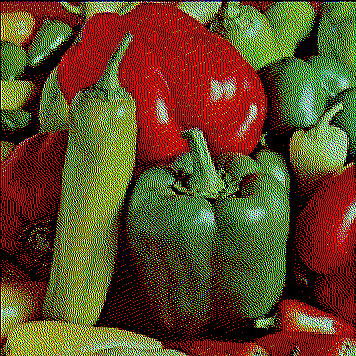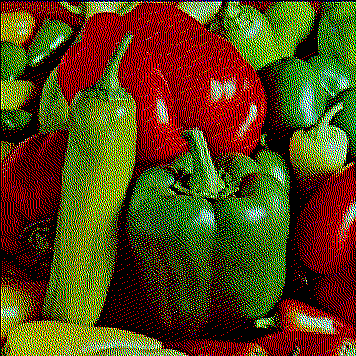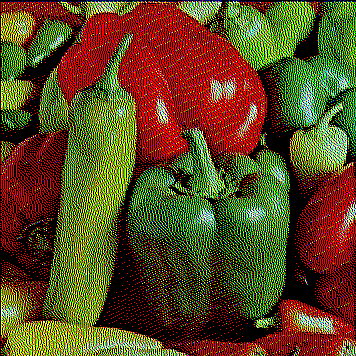IEEE Signal Processing Letters,
vol. 10, no. 4, pp. 93-97, April 2003.
Linear, Color Separable, Human Visual System Models for
Vector Error Diffusion Halftoning
Vishal Monga,
Wilson
S. Geisler, and
Brian L. Evans
Center for Perceptual Systems,
The University of Texas at Austin,
Austin, TX 78712 USA
Vishal.Monga@xeroxlabs.com -
geisler@mail.utexas.edu -
bevans@ece.utexas.edu
Paper -
Vector Diffusion Filters
Online
subjective testing -
Halftoning Research
at UT Austin
Abstract
Image halftoning converts a high-resolution image to a low-resolution
image, e.g. a 24-bit color image to a three-bit color image, for
printing and display.
Vector error diffusion captures correlation among color planes
by using an error filter with matrix-valued coefficients.
In optimizing vector error filters, Damera-Venkata and Evans transform the
error image into an opponent color space where Euclidean distance has
perceptual meaning.
This paper evaluates color spaces for vector error filter optimization.
In order of increasing quality, the color spaces are
YIQ, YUV, opponent (by Poirson and Wandell), and
linearized CIELab (by Flohr, Kolpatzik, Balasubramanian,
Carrara, Bouman, and Allebach).
Images
 Original
Original
 Halftone using Linearized
CIELab
Halftone using Linearized
CIELab
 Halftone using opponent
color space
Halftone using opponent
color space
 Halftone using YUV
color space
Halftone using YUV
color space
 Halftone using YIQ
color space
Halftone using YIQ
color space
COPYRIGHT NOTICE: All the documents on this server
have been submitted by their authors to scholarly journals or conferences
as indicated, for the purpose of non-commercial dissemination of
scientific work.
The manuscripts are put on-line to facilitate this purpose.
These manuscripts are copyrighted by the authors or the journals in which
they were published.
You may copy a manuscript for scholarly, non-commercial purposes, such
as research or instruction, provided that you agree to respect these
copyrights.
Last Updated 01/16/06.
 Halftone using Linearized
CIELab
Halftone using Linearized
CIELab
 Original
Original
 Halftone using Linearized
CIELab
Halftone using Linearized
CIELab
 Halftone using opponent
color space
Halftone using opponent
color space
 Halftone using YUV
color space
Halftone using YUV
color space
 Halftone using YIQ
color space
Halftone using YIQ
color space